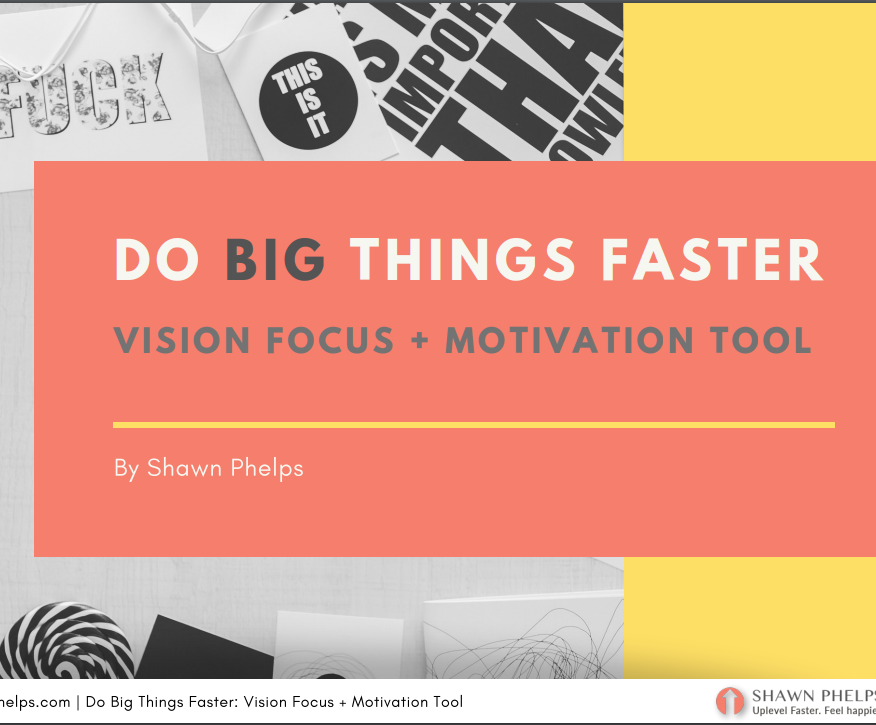One hundred years ago, Albert Einstein presented his Theory of General Relativity, which set forward the paradigm-shifting idea that gravity between objects is caused by curvatures in space and time. If you’ve always wanted to understand what the hell that means, this post isn’t going to help you–but this cute 3-minute video will do the trick.
My obsession has always been: How do people come up with ideas like that? What energetic laws are they harnessing, and how can I use them myself?
After watching two documentaries on Einstein last night, I created my own formula: Genius as Directed Energy.
Of course, theories are always being tested and adjusted until they’re as accurate as they can be; just this morning I thought of another key point that I don’t have time add to my cute infographic below, but I’ll write it here (It belongs under “Purity of Focus”). I have no doubt it will keep unfolding as I use and test it (and I welcome your feedback if you uncover a new component!).
Right now, the formula is this:
4 Elements of Focus That Create Genius
Field of Focus + Intensity of Focus + Consistency of Focus + Purity of Focus
= Your New Creation/Idea (i.e. Genius)
Wow, you’re thinking. That’s nerdy-cool and all that Shawn. But how do I translate that into something I can use?
I’m glad you asked. Because I’m all about the practical side of energetic knowledge.
If you want to use this right now to explore and strengthen your own genius, get a piece of paper and divide it into 4 quadrants. In each quadrant, write down the 4 Elements of Focus included in the above equation. Then write down notes about how this applies to you as you explore each quadrant.
Okay, here we go:
- Field of Focus: All this means is how big is your field of vision–the area you are focusing on? Are you trying to explore one idea/solve one problem, or are you trying to explore 20 ideas/solve 20 problems? The tighter your field of focus, the more powerfully your mind can zoom in on solving that. In Einstein’s case, he was obsessed with light for most of his life–this powerful level of focus led to his eventual discovery of E=MC2 and other breakthroughs (he noticed that light is deflected by gravity)
- Intensity of Focus: How intensely are you focusing on and exploring this idea? This will be driven by one of three motivators, all of which can create results. But for obvious reasons, one of them is best avoided. I think it’s important to realize that most people create from a mix of the following, whether they realize it or not. So awareness of our real drives/desires is important.
- Fear. Hitler was fully in this camp. He was focused enough energetically to create massive results, but thankfully these are not the kinds of results most people will aspire to. I would also put someone like Donald Trump in this category. His fear of being invisible and therefore irrelevant has created quite a spectacle as far as his creations, but no one can argue that he’s not a powerful creator. On a less extreme scale, most everyday entrepreneurs create from this place. They fear that they’re not capable of original ideas, so they copy others ideas instead. This just leads to mediocrity.
- Curiosity. Einstein was in this camp. He was fascinated by how and why things worked, to the point that he drove people around him crazy with his constant questions like: “If you and I were to ride on a beam of light, what would that look like?” This is a powerful and fun place to create from, but it’s hard because we have to put down all our pre-existing beliefs and judgments to be able to do it freely. Liz Gilbert, who infamously wrote “Eat, Pray, Love” wrote about this extensively in her new (awesome!) book on creativity “Big Magic”; this is what keeps her going even when she feels lost or overwhelmed.
- Love/Compassion. Buddha and Jesus were in this camp. As are people like Oprah Winfrey, Eckhart Tolle and Byron Katie. They have experienced such deep suffering that they feel motivated to ease that suffering in the world for themselves and others. Now, this category can be super tricky, because often people who think they are helping others from a place of Love/Compassion, are actually doing it from a place of Fear (desiring to feel special, wanted, noble etc.).
- Consistency of Focus: The idea that it’s possible to have a great idea and turn that into millions of dollars within a few months has really grabbed hold in our society, and it’s false. Energy must have mass and velocity for anything significant to be created. When we are talking about thoughts as energy, that mass and velocity is created by the same types of thoughts being explored from different directions for a long period of time.
- E.g. Einstein. Since the age of 16, Einstein repeatedly asked himself one question: What would happen if you raced alongside a light beam? He eventually received the insight that the speed of light remains the same no matter how fast one moves. This went against Newton’s laws of motion, which led him to uncover the principle of relativity.
- E.g. Malcolm Gladwell. In his book Outliers: The Story of Success, Malcolm Gladwell proved that the one thing successful people all have in common is they surpass the “10,000-Hour Rule.” The Beatles played over 1,200 gigs for seven years before they experienced “overnight fame” in 1964.
- Purity of Focus: Most of us are so distracted by our unprocessed subconscious flotsam and jetsam–craving special approval and attention, desiring to fit in with the “cool people”, fearing others’ rejection or judgment, craving comfort, safety and guarantees, competing with and judging others–that it’s extremely challenging for us to focus our mind purely on exploring ideas and deepening our talents and abilities. That’s why it’s so important to do the inner work if you want to create or achieve anything significant with your life.
- Interesting Factoid: a number of true geniuses are on the autism spectrum. This helps them have more focus than the average person. They tend to become obsessed with understanding how things work from a young age. They process the world more with images than with words. They don’t feel a need for others attention or approval (very helpful when exploring ideas). Researchers at Cambridge and Oxford universities believe both Einstein and Newton showed signs of Asperger’s Syndrome.
- Inclusionary Thinking: I just thought of this element this morning. Purity of Focus requires having an open mind so that you don’t rule out seemingly unrelated ideas. Big thinkers equally examine all ideas without evaluating them based what they currently believe to be true. This is integral to making new connections between old ideas.
- Creation (Genius): Your subconscious mind never stops working. After you have considered all ideas equally–including those that don’t appear to be related–it will keep recombining and making associations between these different ideas and possibilities, trying to solve the problem you have set out for it. Eventually, a new idea will appear in your consciousness–what people call the “aha” moment. If you use this formula to direct as much focused energy, both mental and physical in one direction, it will very likely happen (eventually!).
- This also relates to deepening a craft, such as writing novels or performing music. Steven Pressfield often talks about the ten years he dedicated to writing novel after novel, not caring whether people liked them or not, just exploring and deepening the craft with the objective of becoming a professional novelist. He succeeded and then some!
Here’s the infographic I created for myself to integrate all of this.
Obviously, I’m still exploring all the angles of this, but this is the kind of thing that really excites me. For me, my main focus for the past two decades has been understanding how everything fits together–the big picture of how we can make our lives work in a way that feels natural, fun and meaningful, and all the universal laws and formulas behind that.
This obsession is only now paying off for me. For many years I read hundreds of books, attended thousands of dollars worth of workshops, with no obvious results. I also completed thousands of hours worth of meditation, observing my own thoughts and emotions and tracking everything I tried to shift them in new directions. What you are reading here on this blog, week after week, are my reflections that are only coming together very recently. And I have no idea where they are taking me. But it’s fun!
And that’s the whole point. Pick your area of interest. Invest your time and focus into it. Commit over the long term. Keep deepening your level of focus using all the tools I’ve provided. And forget about fly-by-night success. It’s a distraction. Build your intellectual and creative territory. Stop worrying about fitting in OR standing out–they’re both flipsides of looking outside yourself for happiness. A life of purpose and meaning comes from looking deep inside yourself to find what it is you want to spend your life exploring and committing to that. It will create dividends and adventures and a life so extraordinarily fun and meaningful that it will amaze you.
Rise up and shine as your True Self,
Shawn xo

- It taps you into your purpose + life's calling.
- This gives you focus + motivation + momentum.
- It comes with a video tutorial + mini-course.
- + 6 days of life-changing secrets on harnessing the power of your subconscious mind to do bigger things faster + happier.




Woah Shawn! You are really doing it. It’s the home stretch. Stay strong. You are almost at the finish line. I can’t wait to read it! Xoxo
Thank you Sybil dahling! Your support is deeply valued and appreciated. My book is a long way from finished but def I’m inching forward every day on it. Xoxo